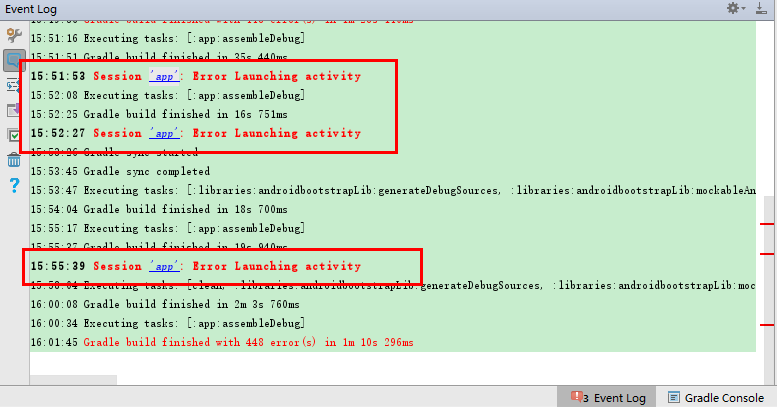Contents of articles
Scenario description session container add session remove session logout session failure
Supplement: listen to the change of session property. Session is independent of other session sharing schemes
Scene description
In the spring boot project, in order to simplify the message module, if there is a new message, write it to the database first. If the user is online, set newmessage flag = true in the session of the user receiving the message. The front end only needs to poll the session each time, and does not need to visit the database each time
the session needs to be obtained according to the user ID, so if the user logs in successfully, call the put method, log out or if the session fails, call remove.
Session container
Stores the session of the logged in user
public class LoggedUserSessionContext{
//The default capacity is 16, you can set a reasonable initial value according to the number of visits to your site to avoid frequent expansion at the beginning.
private static Map<Integer, HttpSession> sessionMap = new ConcurrentHashMap<>(128);
public static HttpSession putIfAbsent(Integer userId, HttpSession session) {
// previously logged in a client, then return that session, to achieve multi-party login session sharing
return sessionMap.putIfAbsent(userId, session);
}
public static void remove(Integer userId) {
sessionMap.remove(userId);
}
public static HttpSession getSession(Integer userId) {
return sessionMap.get(userId);
}
}
Add session
After the user logs in successfully, execute the following code snippet
HttpSession session = LoggedUserSessionContext.getSession(user.getId());
if(session != null){
//Use the previously logged in id
SpringUtil.setCookie("JSESSIONID", session.getId(), 60 * 30);
}else{
session = SpringUtil.getRequest().getSession();
session.setAttribute(SessionKey.USER, user);
LoggedUserSessionContext.putIfAbsent(user.getId(), session);
}
After successful registration, execute the following code snippet
HttpSession session = SpringUtil.getRequest().getSession();
session.setAttribute(SessionKey.USER, user);
LoggedUserSessionContext.putIfAbsent(user.getId(), session);
Remove session
On cancellation
User user = (User)session.getAttribute(SessionKey.USER);
LoggedUserSessionContext.remove(user.getId());
session.invalidate();
When session fails
Use the listener to monitor the implementation of session and implement the HttpSessionListener interface
import javax.servlet.annotation.WebListener;
import javax.servlet.http.HttpSession;
import javax.servlet.http.HttpSessionEvent;
import javax.servlet.http.HttpSessionListener;
@WebListener
public class SessionListener implements HttpSessionListener {
//Note: HttpServletRequest's getSession() method, if the current request does not correspond to the session will automatically create a session.
//Using getSession(false) will not create session, if there is no session corresponding to the current request, it will return null.
//New session created if unknown user browsing
@Override
public void sessionCreated(HttpSessionEvent event) {
}
//session Destroy User offline, logout login
@Override
public void sessionDestroyed(HttpSessionEvent event) throws ClassCastException {
HttpSession session = event.getSession();
Object userObj = session.getAttribute(SessionKey.USER);
if(userObj != null){
User user = (User)userObj;
LoggedUserSessionContext.remove(user.getId());
}
}
}
Supplement:
Listen for the change of session property
With HttpSessionAttributeListener * * it is not recommended to listen to HttpSessionAttributeListener * * because it is too frequent
import java.util.HashSet;
import javax.servlet.ServletContext;
import javax.servlet.annotation.WebListener;
import javax.servlet.http.HttpSession;
import javax.servlet.http.HttpSessionAttributeListener;
import javax.servlet.http.HttpSessionBindingEvent;
import javax.servlet.http.HttpSessionEvent;
import javax.servlet.http.HttpSessionListener;
@WebListener
public class SessionListener implements HttpSessionListener, HttpSessionAttributeListener {
//注Meaning: HttpServletRequest's getSession() method, if the current request does not correspond to the session will automatically create a session.
//use getSession(false) will not create session, if there is no session corresponding to the current request, it will return null.
//add property user login
@Override
public void attributeAdded(HttpSessionBindingEvent httpSessionBindingEvent) {
HttpSession session = httpSessionBindingEvent.getSession();
}
//Delete Properties User Logout
@Override
public void attributeRemoved(HttpSessionBindingEvent httpSessionBindingEvent) {
logger.info("--attributeRemoved--");
}
//Property substitution Information change
@Override
public void attributeReplaced(HttpSessionBindingEvent httpSessionBindingEvent) {
}
//New session creation If unknown user browsing
@Override
public void sessionCreated(HttpSessionEvent event) {
HttpSession session = event.getSession();
MySessionContext.AddSession(event.getSession());
}
//session Destroy User offline, logout login
@Override
public void sessionDestroyed(HttpSessionEvent event) throws ClassCastException {
HttpSession session = event.getSession();
MySessionContext.DelSession(session);
}
}
Session independence
Instead of sharing sessions, you can use code logic to set pseudo sharing and change the container and data structure where sessions are stored
private static Map<Integer, List<HttpSession>> sessionMap = new ConcurrentHashMap<>(128);
In this way, each terminal can use session without affecting each other.
